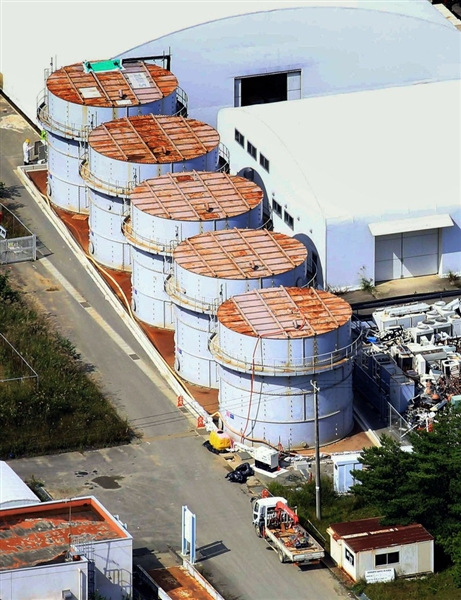
Water 6,700 times more radioactive than legal limit spills from Fukushima
Arata Yamamoto and Alexander Smith, NBC News

Tokyo Electric Power Company, or TEPCO, said the water which spilled from the storage tanks had radiation readings as high as 200,000 becquerels per liter -- almost 6,700 times higher than the legal limit of 30 becquerels.
Although sandbags have been placed to prevent further spread of the leak, some of that water may have already reached the plant's harbor on the Pacific Ocean through a drainage trench, TEPCO said.
The leak comes one day after Japanese fast food company Yoshinoya Holdings announced plans to grow vegetables on a farm just 60 miles from the nuclear plant.
A TEPCO spokesman told a press conference in Tokyo on Thursday that the leak happened because workers miscalculated the amount of water the tank was capable of holding due to it sitting on a slope.
Japanese Chief Cabinet Secretary Yoshihide Suga said following the announcement that measures to stop the leaks were insufficient and pledged to work with TEPCO to prevent similar incidents.
Japan is still recovering from the earthquake and catastrophic tsunami that did terrifying damage to the Fukushima Nuclear Power plant. With radiation continuing to leak into the Pacific the Japanese government is planning to spend a half a billion dollars to contain the disaster. NBC's Anne Thompson reports.Â
Fukushima has remained the most prominent legacy of Japan’s earthquake and tsunami of March 2011 which killed close to 16,000 people.
Following the quake, the plant suffered three nuclear meltdowns and as many as 300,000 people were forced to evacuate or voluntarily left their homes. A survey said last month that more people had died because of the evacuation process, some 1,600, than had been killed in Fukushima by the disaster itself.
Wednesday’s leak is the latest in a long string of setbacks to hit attempts by TEPCO and the Japanese government to make the site safe.
The operator announced Tuesday that four tons of rainwater contaminated with low levels of radiation had leaked during an operation to transfer water between holding tanks, Reuters reported.
It has been two years since the northeast of Japan was devastated by natural disasters and a man-made one that killed 19,000 people and forced 160,000 to flee their homes. The earthquake and tsunami in March 2011 were followed by explosions and a reactor meltdown at the Fukushima power plant -- the world's worst nuclear disaster in 25 years. ITN's Alex Thomson reports from inside Japan's radiation zone.
The tanks, which are used to store the excess water pumped over damaged reactors to keep them cool, were flooded by the recent tropical depression Sepat, a spokesman told Reuters.
In August, TEPCO said one of these same tanks had leaked 400 tons of highly radioactive water.
The crisis prompted Japanese Prime Minister Shinzo Abe to pledge in September almost half a billion dollars to build a subterranean ice wall in an attempt to prevent groundwater mixing with the water being used to cool melted fuel rods.
Reuters contributed to this report. NBC News' Alexander Smith reported from London.
VIEW VIDEO AND SLIDE SHOW

.jpg)